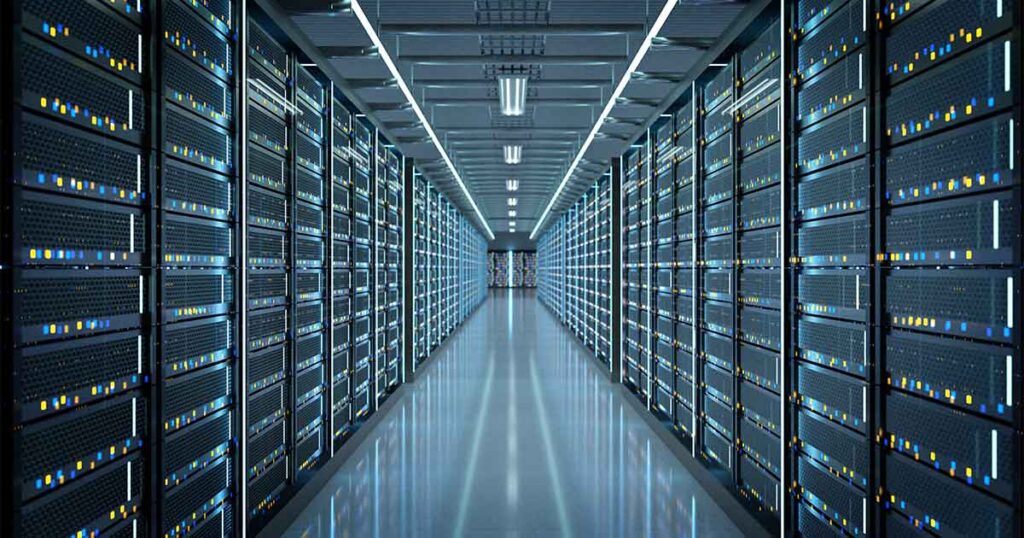Your phone probably has 128 gigabytes of storage. Maybe 256. Some flagship phones now come with a full terabyte. Twenty years ago, that much storage would have required a room full of hard drives. Today it fits in your pocket. Magnetic technology made that possible, and it’s about to get even better.
Most people don’t think about how their data actually gets stored. They just know it’s there when they need it. But understanding the magnetic technology behind data storage helps you appreciate just how wild the progress has been, and where it’s heading next.
How Hard Drives Actually Store Your Data
Every hard drive contains spinning metal platters coated with a thin layer of magnetic material. A tiny arm with a read/write head hovers just nanometers above the surface, moving back and forth to access different parts of the disk. When you save a file, the write head creates tiny magnetic regions on the platter. Each region represents either a 0 or a 1 in binary code.
The smaller these magnetic regions are, the more data you can pack onto a single platter. That’s where nanomagnetics comes in. Modern hard drives use magnetic nanoparticles to create incredibly small storage bits. We’re talking about magnetic domains just 10 to 20 nanometers across.
The principles behind nanomagnetics explain why shrinking magnetic particles doesn’t just save space, it actually makes them more stable and reliable for long-term data storage.
The Heat Problem Nobody Talks About
Here’s something most people don’t know: as you make magnetic storage bits smaller, they become less stable. Temperature fluctuations can cause tiny magnetic particles to randomly flip their orientation, which means your data could just disappear. Scientists call this the “superparamagnetic limit.”
For years, this seemed like a hard barrier. You could only make storage bits so small before they became unreliable. But researchers found a clever workaround called heat-assisted magnetic recording, or HAMR.
HAMR uses a tiny laser to briefly heat up a spot on the disk platter to around 400 degrees Celsius. At that temperature, the magnetic material becomes easier to write to. The write head quickly changes the magnetic orientation, then the spot cools back down in less than a nanosecond. Once cool, the data is locked in place and much more stable.
According to research published in Nature, HAMR technology could increase storage density by up to 10 times compared to current hard drives. That means 100-terabyte hard drives could become common in the next few years.
Why Solid State Drives Haven’t Killed Magnetic Storage
You might be thinking, “Don’t we have SSDs now? Aren’t magnetic hard drives obsolete?” Not even close. SSDs are faster, sure, but they’re also way more expensive per gigabyte. For large-scale data storage, magnetic hard drives still dominate.
Data centers storing cloud backups, video archives, and scientific research data need hundreds of petabytes of storage. One petabyte is 1,000 terabytes. At current prices, storing that much data on SSDs would cost millions more than using magnetic hard drives. As long as that price gap exists, magnetic storage isn’t going anywhere.
Plus, magnetic storage has another advantage: it doesn’t lose data when the power is off. SSDs can lose data if they sit unpowered for too long. For archival storage that might sit on a shelf for years, magnetic tape and hard drives are still the gold standard.
Magnetic Tape Is Making a Comeback
Speaking of tape, yes, magnetic tape storage still exists. In fact, it’s better than ever. Modern magnetic tape cartridges can store up to 580 terabytes on a single cartridge smaller than a paperback book. That’s more than most hard drives.
Companies like IBM and Sony are pushing tape technology forward using the same nanomagnetic principles that improved hard drives. They’re making the magnetic particles smaller and packing them more densely on the tape. The result is cheap, reliable storage that can last for decades.
These same magnetic particles have medical applications too, proving that advances in one field often benefit others in unexpected ways.
Spintronics: The Next Revolution
Here’s where things get really interesting. Traditional electronics use the charge of electrons to store and process information. Spintronics uses the spin of electrons instead. Every electron spins either up or down, and that spin has a magnetic property.
Spintronic devices can read and write data using much less energy than traditional electronics. They’re also non-volatile, meaning they keep their data without power. And they’re fast, potentially hundreds of times faster than current memory technologies.
MRAM, or magnetoresistive random-access memory, is one commercial application of spintronics that’s already on the market. It combines the speed of RAM with the data retention of flash memory. As manufacturing costs drop, MRAM could replace both traditional RAM and flash storage in computers and phones.
Quantum Computing and Magnetic Storage
Quantum computers need a way to store quantum information, and magnetic nanoparticles might be the answer. Quantum bits, or qubits, can exist in multiple states simultaneously. That property enables quantum computers to solve certain problems millions of times faster than regular computers.
One approach to building stable qubits involves using the magnetic spin of single atoms or small clusters of atoms. These magnetic qubits can maintain their quantum state longer than other designs, which is crucial for building practical quantum computers.
The race to build better quantum computers and AI systems is driving demand for breakthrough storage solutions. With so many new AI tools emerging constantly, the need for faster, more efficient data storage has never been more critical. These technologies depend on magnetic storage systems that can handle massive computational workloads.
3D Magnetic Recording
Current hard drives store data in a flat, two-dimensional pattern on disk platters. But what if you could store data in three dimensions? That’s the idea behind 3D magnetic recording.
Researchers are developing hard drives with multiple magnetic layers stacked on top of each other. Each layer stores its own data, effectively multiplying the storage capacity without making the drive any larger. Early prototypes have achieved five layers, but theoretically, you could stack dozens of layers.
The challenge is reading and writing to specific layers without interfering with the others. Scientists are experimenting with different laser wavelengths and magnetic materials to make this work. If they succeed, storage density could increase by 50 times or more.
DNA Storage: Magnetic Manipulation
This one sounds crazy, but it’s real. Scientists are exploring DNA as a storage medium. DNA can store incredible amounts of information in a tiny space. One gram of DNA could theoretically store all the data that currently exists on the internet.
The problem is writing and reading DNA data is slow and expensive. That’s where magnetic nanoparticles come in. Researchers are attaching magnetic particles to DNA strands so they can manipulate and sort them using magnetic fields. This could speed up DNA data storage and retrieval dramatically.
Products you use every day already rely on magnetic storage technology, often in ways you’d never expect.
Energy Efficiency Matters
Data centers consume about 1% of the world’s electricity. That number is growing as more services move to the cloud. Making data storage more energy-efficient isn’t just about saving money, it’s about sustainability.
Magnetic storage technologies, especially newer spintronic devices, use significantly less power than traditional electronics. A hard drive using HAMR technology consumes about the same power as older drives but stores 10 times more data. That’s a huge efficiency gain.
As the world generates more data every year, improving storage efficiency becomes critical. We’re creating about 2.5 quintillion bytes of data every single day. That number doubles roughly every two years. Without better storage technology, we’d need to build new data centers constantly just to keep up.
What This Means for Regular People
So what does all this technical stuff mean for you? In practical terms, it means your devices will store more data, access it faster, and use less battery power. Your phone might soon have multiple terabytes of storage standard. Cloud storage will get cheaper. Backing up your entire digital life will become trivial.
For creators and professionals, it means working with massive video files, 3D models, and datasets becomes easier. You won’t have to constantly shuffle files around to free up space or wait for slow transfers.
For society, it means we can preserve more of our collective knowledge and culture. Libraries, museums, and archives can digitize their collections without worrying about storage costs. Scientific research generates enormous amounts of data that needs to be stored and analyzed, and better magnetic storage makes that possible.
The Road Ahead
The next decade will bring storage technologies that seem impossible today. Researchers are working on molecular-scale magnetic storage where individual molecules store data. They’re developing materials that can switch magnetic states in picoseconds, thousands of times faster than current technology.
Explaining these complex topics to wider audiences helps more people understand and appreciate the technology shaping our digital world.
One thing is certain: magnetic technology will remain at the heart of data storage for years to come. The physics works too well, and the cost advantages are too significant to abandon. Instead of being replaced, magnetic storage keeps evolving, adapting new nanomagnetic discoveries to push past each new limit.
The invisible magnetic forces storing your photos, videos, and documents are more sophisticated than most people realize. And they’re about to get a whole lot better.



